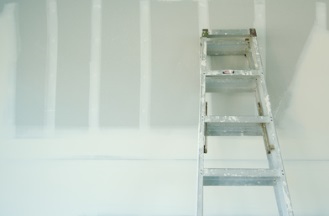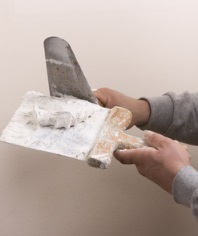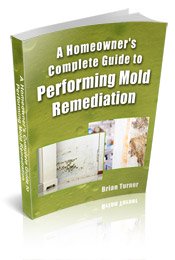Find a Mold Specialist Now
Click or Call, Toll-Free 24/7
Mold Resistant Drywall Review

If you’re concerned about household mold, you might want to consider using mold resistant drywall and mold resistant mud (joint compound) to help reduce the ability of mold to grow on these surfaces. You see, when mold grows on dry wall, it’s not as simple as washing it off, as you’d wash mold off your shower tiles.
This is important because once drywall becomes contaminated with mold, often the only way to fix it is to remove the affected drywall and replace it. It may be impossible to clean the drywall. Therefore correcting a moldy drywall problem can be time consuming and expensive. It can also pose quite an inconvenience. Moldy drywall poses numerous health risks, though, so if your drywall develops mold, you’ll want to take care of it. Prevention may be easier than remediation.
Mold Resistant Drywall
Mold resistant drywall does not prevent mold from growing altogether but greatly limits it. Instead of the traditional paper backing used on drywall, it has fiberglass matting. Fiberglass is another name for fiber-reinforced plastic; it’s not really glass. It’s much sturdier than paper, though.
Mold cannot grow or grows very little on the fiberglass. It’s also easier to clean mold off fiberglass than regular drywall if a little mold does grow. Of course, the mold resistant type costs more than traditional drywall. It will last longer, though, particularly in damp environments like bathrooms and basements. It will also help you stay healthy, since household mold can cause so many health symptoms.
A middle-of-the-road alternative is called greenboard. It’s heavily coated paper, coated with heavy-duty paint, so it’s more durable than traditional drywall but not as durable as the mold resistant fiberglass stuff. Greenboard costs more than traditional drywall but less than the mold resistant stuff, too. Greenboard may do the job for you in areas that don’t receive a lot of moisture or dampness. In very damp locations, though, you’ll probably want to stick with mold resistant materials, like fiberglass.
Both drywall with fiberglass matting and greenboard are handled much like regular drywall. The installation process is essentially the same. It’s just that greenboard and drywall made with fiberglass matting will last longer and not develop mold.
If you have a professional putting up drywall for you, discuss the best type for your needs with him or her. Ask if he or she thinks greenboard will suffice or if mold resistant drywall with fiberglass matting would be better suited for your needs.
Mud and Tape

If you invest in drywall that is mold resistant, you’ll want to also invest in drywall mud or compound that is mold resistant and mold resistant drywall tape. “American School and Hospital Facility Magazine” points out that if you don’t invest in mold resistant mud and tape, you’re wasting your money if you buy drywall that is mold resistant. Mold is much less likely to grow on mold resistant drywall tape and mud than on regular tape and mud, which provide a fine medium for mold to grow. If you need drywall that will resist mold, you also need mud and tape that will resist it.
You can purchase mold resistant supplies at most large hardware stores. If you have a professional install or repair drywall for you, request that he or she use only mold resistant supplies if mold worries you. If you’re having new drywall installed, you can have a test done for mold and if you do have a mold problem, then you can request the mold resistant supplies.
If you have mold that you are removing, make sure you meet with a mold specialist before you start the cleanup process.
When to Consult a Mold Removal Specialist
We advise you to consult a mold removal specialist if:
- You’re not sure how to prevent or eliminate a mold problem in your home.
- You have mold growing inside your walls.
- You suspect you have a mold problem in your home because you smell a musty odor or have been experiencing symptoms of exposure to mold (such as respiratory problems, asthma attacks, allergy symptoms, rashes, sore throat, unexplained fatigue) but you aren’t sure where the mold is.
- You’ve found some mold in your house but aren’t sure you’ve located it all.
- You have questions about the best way to remove moldy drywall.
Mold removal specialists typically offer free consultations. Even if you plan to handle the mold problem in your home yourself, you can schedule a free consultation to get important information and advice from a professional. Follow the link for a list of mold removal specialists in your town.
Return From Mold Resistant Drywall To Our Mold In Homes Page
Black Mold Health Symptoms Home Page





